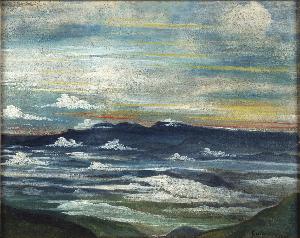Alberto Da Veiga Guignard
Alberto Guignard;Alberto Da Veiga Guignard
Place: Nova Friburgo
Born: 1896
Death: 1962
Biography:
A Brazilian Master of Landscape Painting (1896-1962)
Alberto da Veiga Guignard, also known as Alberto Guignard or simply Guignard, was a renowned Brazilian painter born in Nova Friburgo, Brazil, in 1896. His remarkable talent for capturing the essence of Minas Gerais landscapes has left an indelible mark on the world of art. Early Life and Challenges Born with a cleft lip and palate, Guignard's early life was marked by his father's passing when he was just a child. His mother's remarriage led to their relocation to Germany, where Guignard began his artistic journey at the age of 11. For the next 22 years, he dedicated himself to studying painting, attending the Academy of Fine Arts in Munich under the tutelage of Herman Groeber and Adolf Engeler.
Artistic Career and Notable Achievements
Upon returning to Brazil in 1929, Guignard became a pivotal figure in Brazilian Modernist painting, alongside Candido Portinari, Ismael Nery, and Cícero Dias. In 1931, he participated in the group exhibition Salão Revolucionário (Revolutionary Salon) at the Escola Nacional de Belas Artes in Rio de Janeiro. Guignard's influence extended beyond his own work, as he mentored painters such as Iberê Camargo, Vera Mindlin, and Alcides da Rocha Miranda.
Legacy and Later Life
In 1944, Guignard was invited by Juscelino Kubitschek, then mayor of Belo Horizonte, to establish a drawing and painting program at the newly created Instituto de Belas Artes (now the Guignard University of Art of Minas Gerais). He resided in Belo Horizonte until his passing in 1962. Guignard's body was entombed in the Church of São Francisco de Assis in Ouro Preto.
- View Alberto da Veiga Guignard's Artworks on Wikioo.org
- Explore the Museu Antonio Parreiras (Niterói, Brazil), a museum showcasing Brazilian art.
- Discover more about Concretism, an art movement that emerged in the 1950s and 1960s, primarily in Brazil and other parts of Latin America, on The Concretism Art Movement.
Guignard's legacy continues to inspire artists and art enthusiasts alike, a testament to his enduring impact on the world of Brazilian Modernist painting.

![[Itatiaia] [Itatiaia]](https://img.wikioo.org/ADC/art.nsf/get_small_image_wikioo?Open&ra=D4BU6S)